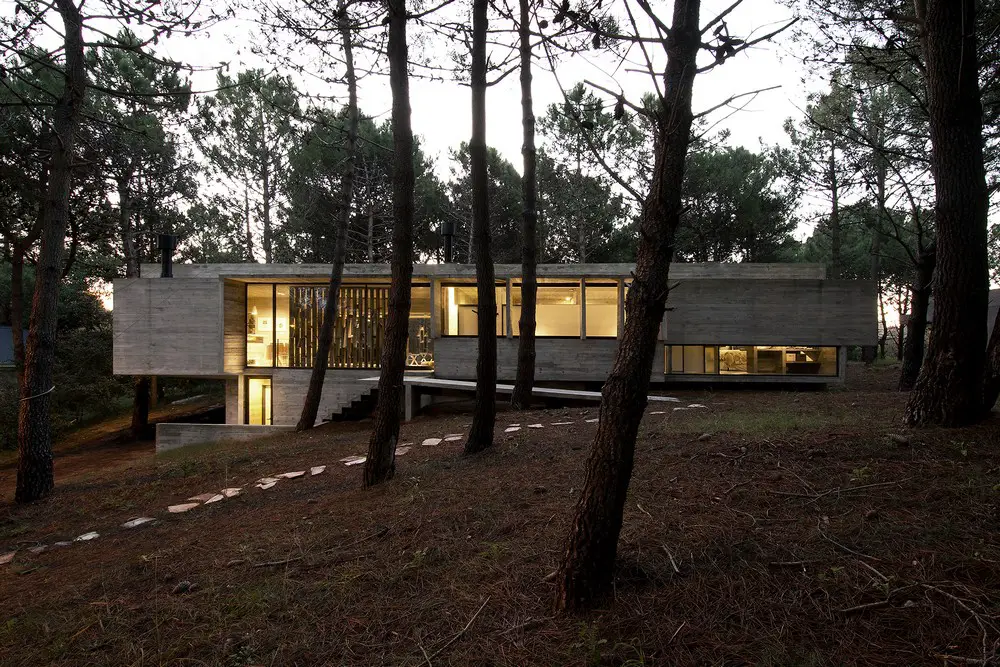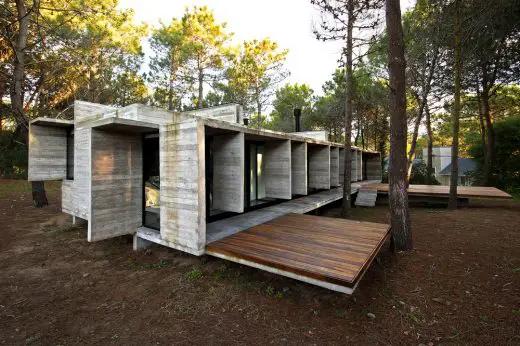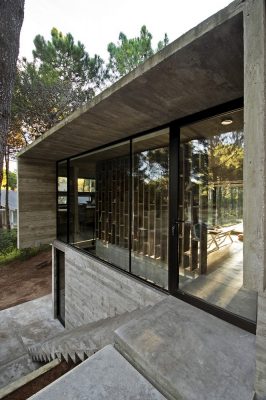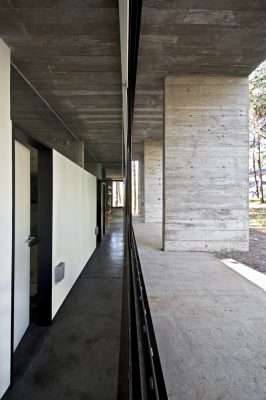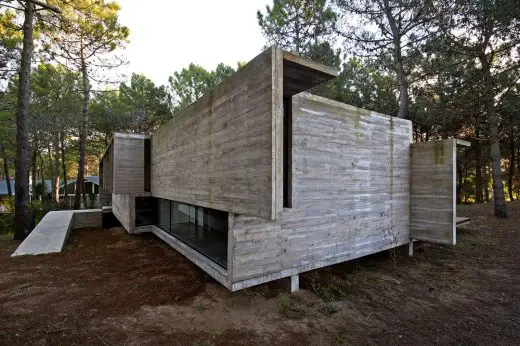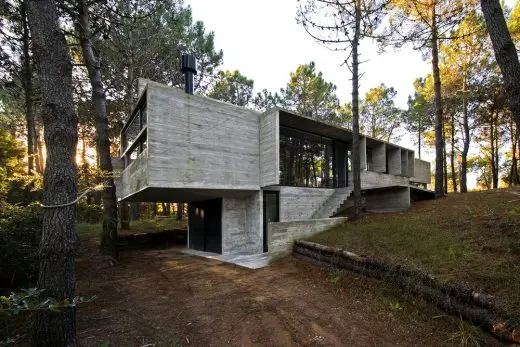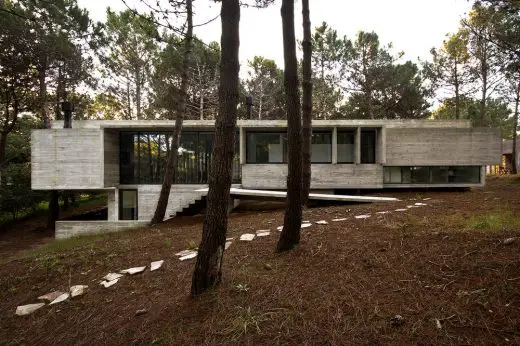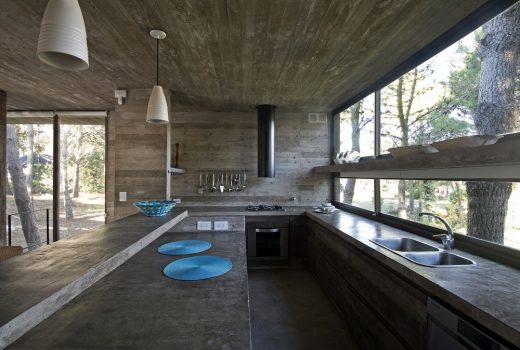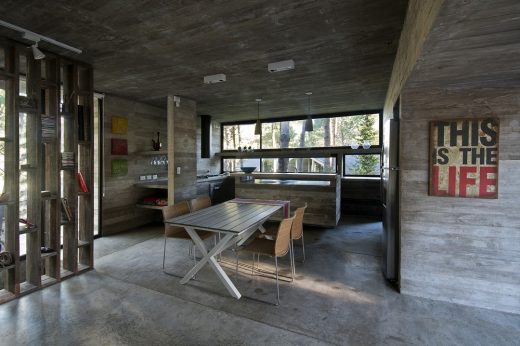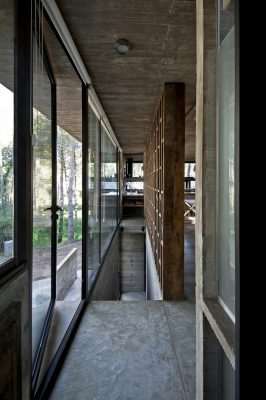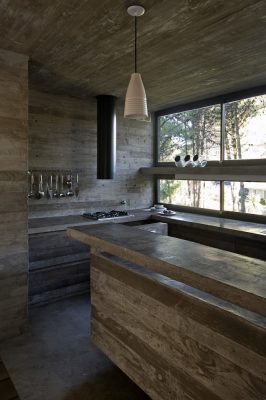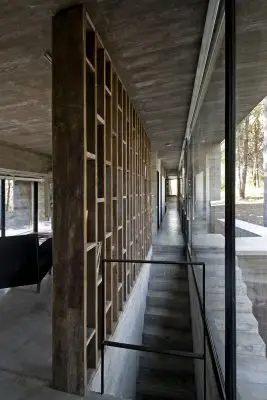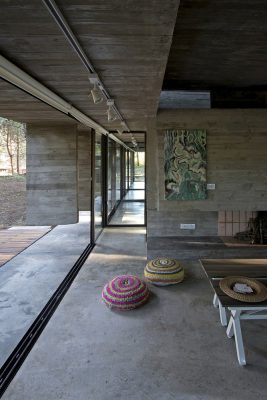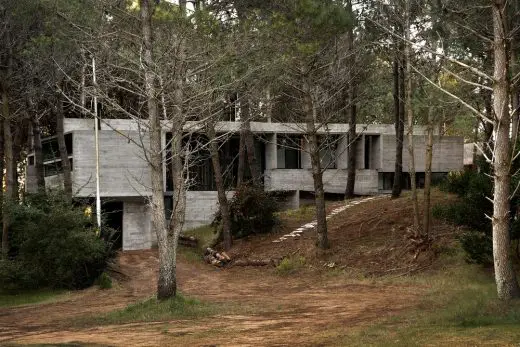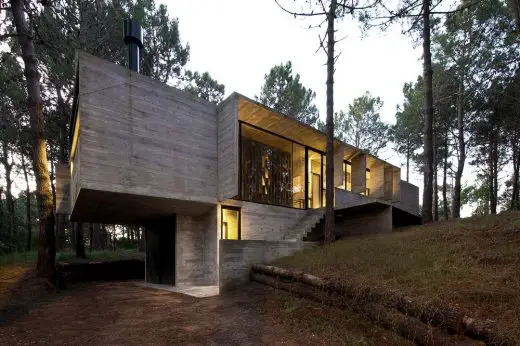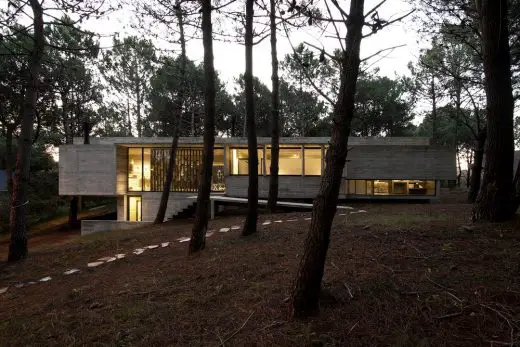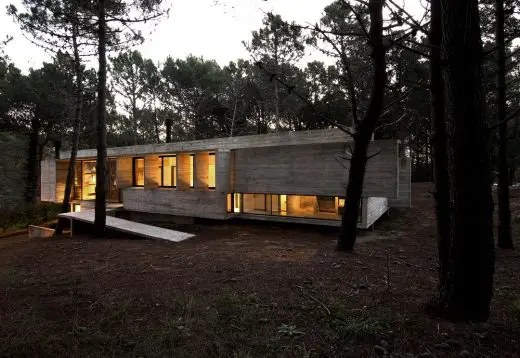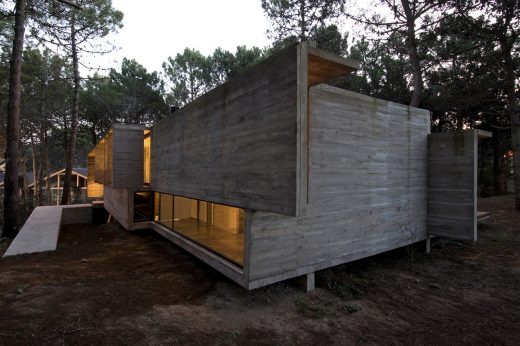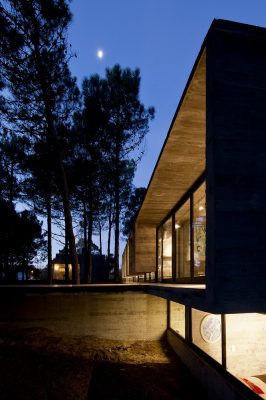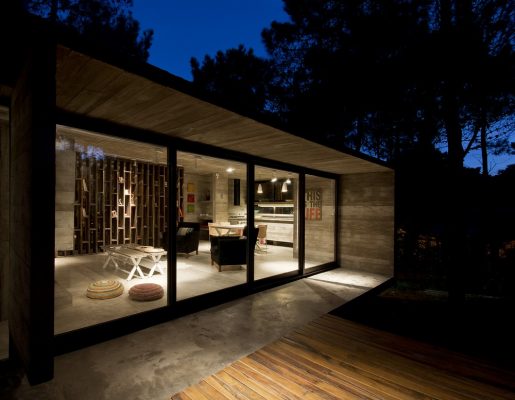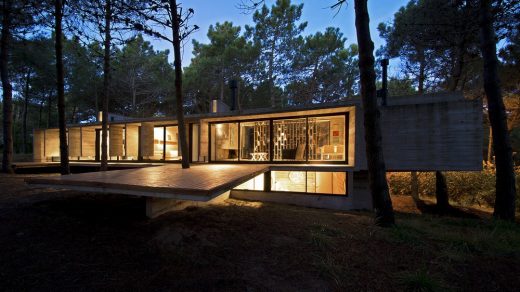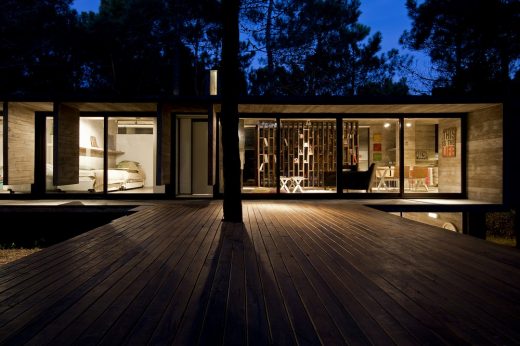Valeria House, Pinamar Buenos Aires Residence, Contemporary Argentina Property, Architecture, Images
Valeria House in Pinamar
Residential Development: Argentina Home – design by BAK arquitectos
1 Sep 2016
Valeria House, Buenos Aires Property
Design: BAK arquitectos
Location: Valeria del Mar, Pinamar, Buenos Aires, Argentina
Valeria House in Pinamar
This work is the outcome of a process that began in 2004 with the construction of Besonias and Almeida Architects’ Summer House in the forest of Mar Azul.
The purpose was to do an intervention in a place of significant landscape value, an opportunity to propose alternatives for design and construction, considering caring of the natural environment as a fundamental premise. The answer was the proposal of a minimal architecture both in material and formal resources, not only as an aesthetic choice, but as an ethical principle of valorization of a wiser use of the resources available.
This stripped architecture should be incorporated into the landscape with a will of belonging, seeking to join the existing reality.
This is how it was decided that a skin of only two materials: concrete and glass, should solve with its reflections and texture such integration and also gave response to formal, structural, functional, terminations and maintenance issues.
An aesthetic constructive proposal as prototype
This architecture, so worried in joining the environment that originates it as far away from stereotypes of preexisting architectures, was finding very good acceptance, so that there are many commissioned houses who appreciate the proposal for a more relaxed use of the dwelling and with an express request of repeating the same constructive aesthetic solution.
This is undoubtedly very rewarding but in turn raises the question of how to deal with that materiality imposed the issue of the uniqueness of each new assignment.
The conclusion is that if this solve with solvency both integration with its surroundings as the aesthetic requirements, the use and maintenance of clients, seems logical and ethically correct to keep repeating that constructive aesthetic solution as a prototype and with every new project to focus on solving specific requirements, requested by that particular client and the topographical and forestation singularities of the territory cut-out.
Thereby the purpose of each new project would be to install each time more strongly the concept that what is built in this forest, do not break with the landscape unit of this privileged atmosphere and give an unprejudiced answer to life forms related to leisure. With these concepts was designed and built Valeria House.
The place
It is a lot in a new housing development, with lush vegetation and crossed by tall dunes. The lot allows a dual access through a cul de sac at its narrowest front or from the street on the opposite. The peculiarity is that in both situations, the abrupt difference in height between the street and the lot makes it difficult accessing to the house.
The commission
The request of principals was a house to be inhabited at different times of the year that would have four bedrooms, the main one with en-suite bathroom, two for the children with a shared bathroom (with multiple places to sleep as they are often accompanied by friends) and a fourth bedroom for guests with some independence, also with bathroom. The gathering place should be integrated with the kitchen and be as generous as possible. Was particularly prominent the need for major expansions outdoors. A reservoir for saving different beach items and a semi-covered carport was also required.
The proposal
They are undoubtedly the peculiarities of the lot already described which give uniqueness to this house.
His sharp relief, the characteristics of its accessibility, the quantity, quality and position of its trees were determining issues on the fundamental project decisions.
On one hand the house was proposed as a compact volume that could be located in the existing forest clearing, affecting only a smaller amount of trees. Since this place matched the highest point of the property, it was decided to solve all the main rooms on that level giving to these rooms a panoramic view and the possibility to be extended outwards through generous expansions.
As a consequence of this first decision it was suggested to place part of the program (in this case the guests room) at a lower level to achieve a smaller plant and resolve with this feature the height difference of the main floor with the access to the lot.
The resulting prism features two very distinct façades: the access, facing SE, quite closed with one major breach in the social sector; the opposite, the NO, with large openings, solved with a series of vertical partitions which do not reach the floor. This resource provides unit to a facade which houses various uses, giving as well some privacy to the rooms and protecting from the incidence of sunlight directly over the openings.
The functional organization
Access to the property from the cul de sac and, at that level, appears the garage, the deposit and the access to the guest sector. Going up a level through a concrete staircase is reached the main floor. Once through the door, it develops to one side the area of bedrooms and bathrooms, and towards the opposite side, the staircase that descends to the guest sector, so that it is connected to the rest of the house if so required.
The area of family gathering has views over both sides of the lot and an expansion of its own. The main bedroom is at the end of the most intimate area and also features an expansion.
The construction
The house is built with two basic materials: exposed concrete and glass. The exposed concrete works like structure, enclosure and flooring, and has no external or internal termination.
The structural proposal is simple: it is slabs supported by inverted or simple beams, except in one end of the prism which is solved with a major cantilever to free of columns the access area.
The deck is solved simply hitting a minimum slope to the last slab to rapidly produce runoff of rainwater. H21 concrete was used with the addition of a fluidizing so that this mixture with small amount of water, when dried, results very compact and requires no sealing. The few interior walls of hollow bricks are plastered and painted, the floor is made of concrete screed cloths divided by plates of aluminum.
The openings are made of dark bronze anodized aluminum. The heating was resolved with radiant floor heating system. The deck is of hardwood boards and slatted which rest on a concrete slab and was treated with an impregnant.
The furniture
Except the master bed, armchairs and chairs, the rest of the equipment of this property is resolved in concrete.
Even the beds of the secondary bedrooms are resolved as perforated cantilevered slabs.
Valeria House in Pinamar – Building Information
Location: Valeria del Mar, Pinamar, Buenos Aires, Argentina
Architecture Studio: BAK arquitectos
Design and Project Management: María Victoria Besonías, Luciano Kruk.
Collaborator: Arq. Diorella Fortunati
Land area: 1.244 sqm
Built area: 190 sqm
Construction year: 2013
Photos: Daniela Mac Adden
Valeria House in Pinamar images / information received 010916
BAK arquitectos on e-architect
Location: Valeria del Mar, Pinamar, Buenos Aires, Argentina
Architecture in Argentina
Contemporary Argentina Architectural Projects
Argentina Architecture Designs – chronological list Argentina Architecture News
Buenos Aires Architecture Tours
Argentina Houses
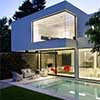
photo : Alejandro Peral
Argentine Architecture Design – chronological list
New Houses – contemporary properties across the globe
Argentine Houses
Casa Negra – Black House, near Buenos Aires
Design: Andrés Remy Arquitectos
Casa Negra Argentina
Las Lomas House, Buenos Aires
Design: Estudio Ramos Arquitectos
Buenos Aires Home
FYF Residence, Rosario
Architects: PATTERNS
FYF Residence
Comments / photos for the Valeria House in Pinamar page welcome
Website: BAK arquitectos

